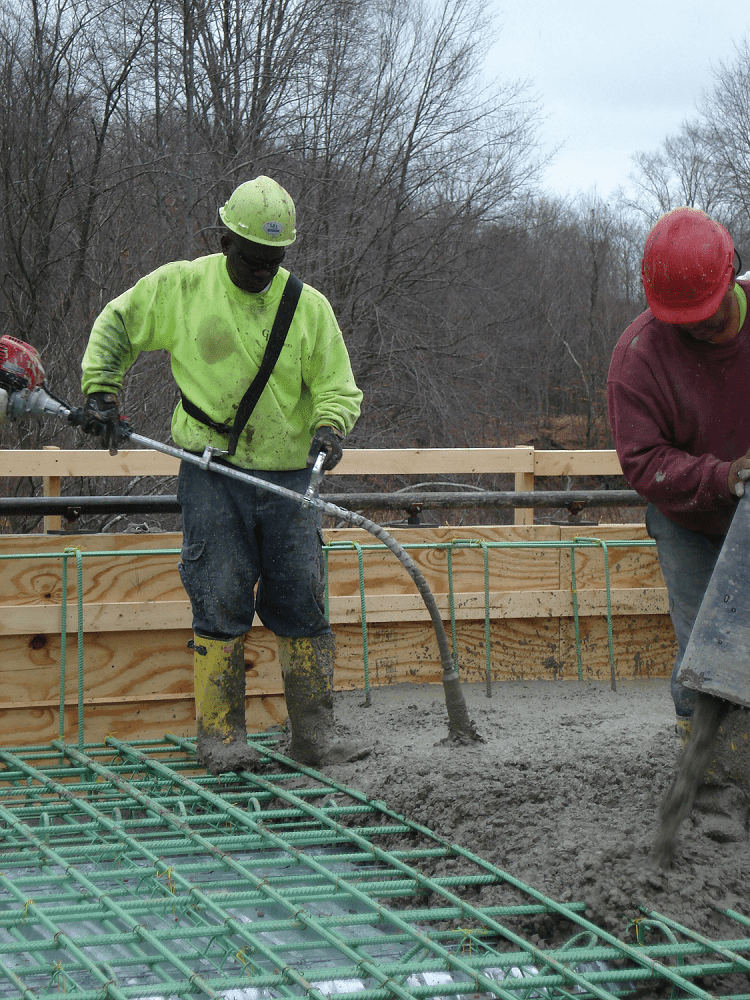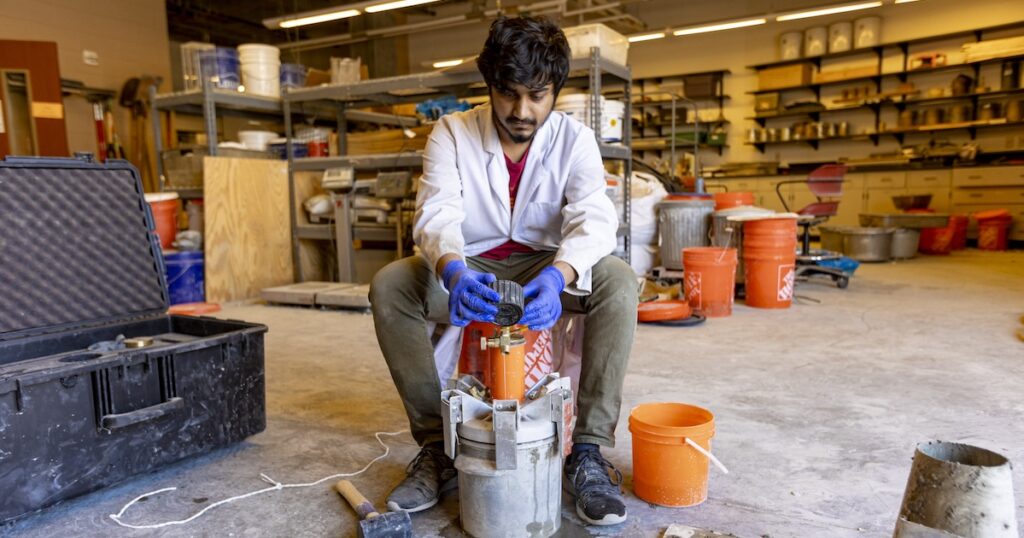The Necessary Function of Concrete Structure in Structural Stability and Longevity
When it comes to developing a residential or commercial property, the foundation is more crucial than you might believe. Concrete structures supply unrivaled stamina and durability, ensuring your framework can withstand numerous environmental challenges. Without a solid base, you risk possible issues like moving or breaking, which can compromise security and value. Recognizing the subtleties of concrete structures could be the secret to preserving your financial investment for many years to find. So, what should you think about following?
Recognizing the Relevance of Concrete Foundations
Concrete structures are crucial to the overall stability of any type of structure, as they provide the necessary assistance required to withstand numerous lots and environmental conditions. When you think of constructing a home or a business space, the foundation is the first thing you should consider. It works as an obstacle versus wetness, securing your building from water damage. A well-placed concrete structure likewise avoids settling and changing, which can bring about cracks in wall surfaces and floors. You'll intend to ensure that the structure is appropriately made and strengthened, as this influences the durability of your structure. In addition, a strong foundation can boost power efficiency by reducing air leakages. Bear in mind, overlooking the value of a concrete foundation can cause expensive repair work down the line. Spending in a high quality structure upfront is essential for the honesty and toughness of your framework.
Benefits of Concrete Structures for Architectural Honesty
While lots of factors add to a structure's structural stability, concrete foundations provide unrivaled resilience and stamina. You'll appreciate that concrete can hold up against severe weather, standing up to both dampness and temperature level variations. This resilience means your structure is much less likely to experience splitting or moving with time, which can compromise its safety.Additionally, concrete's inherent weight provides a solid base, preventing activity throughout natural occasions like quakes or floodings. When you pick a concrete structure, you're likewise selecting reduced upkeep; unlike timber, it will not rot or bring in parasites, conserving you money and time in repairs.Moreover, concrete's fire resistance offers included security, guaranteeing your framework can withstand high temperatures without substantial damage. In general, purchasing a concrete structure implies you're prioritizing the long-term security and honesty of your building, making it a smart option for any building and construction task.
Typical Kinds of Concrete Foundations
When it pertains to building foundations, recognizing the common sorts of concrete foundations can help you make notified options for your task. The most common kinds include slab-on-grade, crawl area, and complete cellar foundations.A slab-on-grade structure is a straightforward, affordable choice, where a thick concrete piece is poured straight on the ground. This type works well in warm climates, as it minimizes heat loss.Crawl space foundations raise the home a little above ground, permitting ventilation and access to plumbing and electrical systems. This style can assist protect against dampness issues.Full basement foundations use added living or storage space while supplying exceptional architectural support. They need even more excavation and are usually made use of in colder climates to protect against frost heave.
Elements to Consider When Creating a Concrete Foundation

Ideal Practices for Installing Concrete Foundations
When you're setting up a concrete structure, appropriate website preparation is important to ensure stability (West Coast GE Concrete contractors). You'll additionally need to understand reinforcement techniques to improve stamina and sturdiness. Ultimately, do not ignore the healing procedure, as it plays an essential role in accomplishing a solid structure
Site Prep Work Relevance
Although it may seem simple, proper site prep work is vital for guaranteeing a solid and durable concrete foundation. Beginning by removing the location of any kind of debris, greenery, or natural product that could endanger the foundation's integrity. Next off, assess the dirt kind and compaction; you may need to excavate or include materials to produce a steady base. Level the ground to ensure also weight distribution and prevent resolving problems in the future. Setting up proper drain systems is likewise vital to prevent water accumulation, which can deteriorate the structure over time. Mark out the structure's measurements precisely to direct the putting procedure. By adhering to these actions, you'll set the phase for a successful concrete structure that stands the examination of time.
Reinforcement Strategies Clarified
As soon as the site is properly prepared, the next step in guaranteeing a sturdy concrete structure entails carrying out effective reinforcement techniques. You should start by using steel rebar, which supplies tensile stamina and aids stop breaking. Lay the rebar in a grid pattern, making sure it rises utilizing spacers to keep appropriate protection. Additionally, think about using wire mesh for additional support, especially in areas based on hefty lots. Don't neglect to connect the rebar intersections securely with cord. For larger structures, fiber support can improve resilience, lowering the threat of shrinking fractures. Always comply with neighborhood building codes and standards to make sure conformity. By applying these support techniques, you'll substantially increase your foundation's strength and long life, laying a strong foundation for your structure.
Treating Process Basics
To assure your concrete structure remedies appropriately, it's essential to keep ample moisture and temperature conditions instantly after pouring. Start by covering the surface with a wet burlap or plastic sheeting to preserve dampness. This maintains the concrete moisturized, protecting against fractures and making sure stamina. You should likewise check the temperature level; optimal curing conditions are in between 50 ° F and 90 ° F. If it's as well warm, mist the surface area routinely to stop fast dissipation. For winter, think about making use of protecting coverings to keep heat. Go for a curing duration of a minimum of 7 days, as this is crucial for optimal strength growth. By following these finest techniques, you'll boost your foundation's longevity and longevity, ensuring architectural integrity for several years to find.
Maintenance of Concrete Foundations for Longevity
To maintain your concrete structure strong and long-term, regular inspections are crucial. You ought to additionally ensure reliable drainage remedies remain in location to prevent water damage. If you detect any splits, resolving them promptly will conserve you from larger issues down the line.

Routine Evaluations and Assessments
While routine examinations and assessments might seem like a job, they're essential for keeping the integrity of your concrete structure. By regularly looking for splits, shifts, or indicators of wear, you can catch potential issues prior to they escalate into costly fixings. Try to find any kind of water merging around the foundation or unusual settling, as these can indicate underlying troubles. It's additionally smart to monitor any type of adjustments in your home's structure, like doors that stick or home windows that don't open efficiently. Maintaining a document of your evaluations assists track adjustments with time, permitting aggressive upkeep. Inevitably, these analyses assure your structure continues to be stable, sustaining the durability and security of your whole framework. Do not overlook this vital facet of homeownership!
Effective Water Drainage Solutions
Routine inspections can expose problems like drain issues that could endanger your concrete foundation's security. To avoid water build-up, ensure your gutters and downspouts direct water far from the foundation. Installing French drains pipes can effectively reroute surface and groundwater, decreasing pressure on your structure wall surfaces. Furthermore, grading the dirt around your home helps assure that water moves away, rather than merging near your foundation.Consider using sump pumps in locations prone to flooding, as they proactively get rid of excess water. On a regular basis check for clogs in drainage systems and clear them quickly. You'll shield your structure's honesty and durability by taking these aggressive actions. Keep in mind, efficient drainage solutions are essential for go to this website keeping a solid, resilient concrete structure.
Trigger Fracture Services
When you notice cracks in your concrete foundation, resolving them quickly is essential for maintaining its long life. Small fractures can swiftly evolve into bigger problems, jeopardizing the architectural honesty of your home. Regularly examine your structure for signs of damage, such as straight or upright cracks. If you spot quikrete concrete resurfacer any type of, do not wait-- repair them quickly. You can utilize epoxy shots or concrete patching substances, which work for sealing cracks. Always comply with the supplier's instructions and consider getting in touch with a professional for significant damage. Bear in mind, timely repair services not just boost your foundation's sturdiness yet also conserve you money in the lengthy run by protecting against extra considerable repair work down the line. Stay aggressive, and your foundation will certainly continue to be strong and safe and secure.
Addressing Typical Issues With Concrete Structures
Concrete structures can encounter different problems over time, making it critical to determine and address them without delay. Among the most typical troubles is cracking, which can happen due to temperature level fluctuations or clearing up soil. If you observe splits, it's necessary to examine their dimension and depth; small splits can often be sealed, while larger ones may need professional evaluation.Water breach is an additional major concern. Excess wetness can cause mold and mildew development and structural wear and tear. Guarantee correct drainage around your structure to alleviate this threat. Furthermore, look for indicators of shifting or bowing walls, as this can show underlying concerns with your structure's stability.Regular examinations are fundamental to catch these issues early. If you detect any worrying signs, do not be reluctant to speak with a structure specialist. By staying proactive, you can preserve the honesty and durability of your concrete foundation, ensuring your home stays risk-free and safe and secure.
Frequently Asked Questions
Just How Does Soil Type Influence Concrete Foundation Performance?
Dirt type significantly impacts concrete structure performance. If you have actually obtained large clay, for example, it can create shifting and fracturing. Sandy dirt may bring about resolving. Understanding your dirt aids ensure a secure structure.
Can Concrete Foundations Be Fixed if Harmed?
Yes, you can fix damaged concrete foundations. Depending upon the level of the damages, more methods like epoxy injection or piece jacking can recover stability. It's best to seek advice from a professional for reliable services.
What Is the Regular Life Expectancy of a Concrete Structure?
A concrete structure normally lasts 30 to 100 years, depending upon elements like dirt problems, environment, and maintenance. You'll desire to maintain an eye on it to guarantee it continues to be in good shape throughout its life-span.
Are There Option Products to Concrete for Foundations?
Yes, there are alternatives to concrete for structures, like steel, timber, or perhaps recycled materials. Each option has one-of-a-kind advantages and drawbacks, so you need to consider your job's details needs when selecting the ideal material.
Just How Does Environment Influence Concrete Structure Longevity?
Climate greatly influences concrete structure longevity (West Coast GE Concrete contractors). Severe temperatures, wetness, and freeze-thaw cycles can compromise the product, leading to splits and architectural problems. You ought to take into consideration regional environment conditions when intending your foundation to assure long-lasting efficiency